Sámara is a very small costal town on the Guanacoste peninsula of Costa Rica. Tourists are attracted to Sámara by a south facing protected cove on the Pacific which harbors modest surf, perfect for people learning to surf. An attraction even more important to some than the beautiful Pacific cove is a first rate Spanish language school that has a prominent spot right on the beach. Students ranging from college age through all adult ages make the school the center of the little town’s economy.
While in a gorgeous location, where the morning wake up call is a chorous of howler monkey “conversations” an delightful songs from sparkling yellow great kiskadees, the town is definitely not a “tony” tourist destination. It is a simple place where many of the 70 or so native families can trace their lineage to a family of 9 children (the “seven sisters” and 2 brothers) who settled and started the village about a century ago. Today, many of those families offer rooms for students at the school. There is little visible wealth, just a little town with one booming business, a few modest hotels and restaurants, a couple of grocery stores and laundries, and a lot of simple, practical housing. One of the reasons it is still small and relatively undiscovered is because it had no access by paved roads until only a few years ago. In fact many of the vehicles in town are rugged old land cruisers that date from the pre-paved roads era.
It is a simple place. There is little ornamention, except at the Catholic church. One can imagine that quite a collection must have been gathered to have the entrance doors decorated with carvings. An image of Jesus with a lamb decorates the door on the right, with Mary and infant on the door on the left. The carvings cover a large part of each door, probably 4 feet tall and are low relief. Whether one appreciates the style or not, one thing is readily apparent. In a place where there is scant evidence of artisan talent, or the wealth to afford artisan talent, these doors were carved by someone well practiced in carving. Note the crisp shadow lines, the well developed linen folds, and the background stipling. The work is on what appears to be oak or a very near relative.
In a place with little other ornamentation, these doors tell us the value people place on their church. The doors are special.
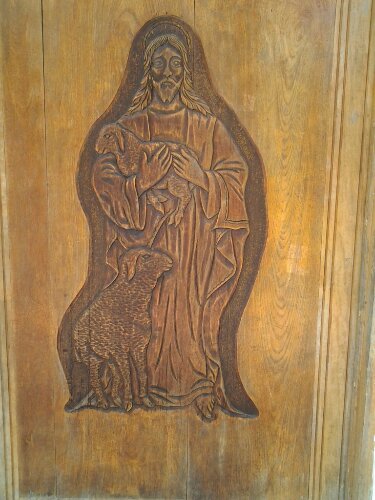
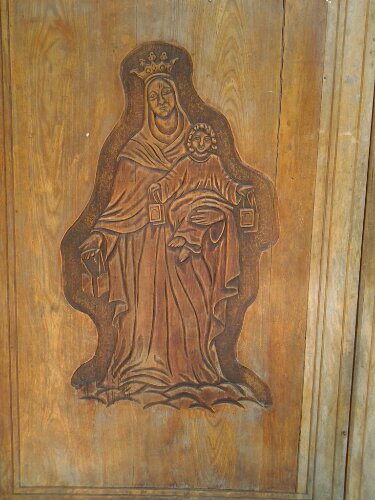
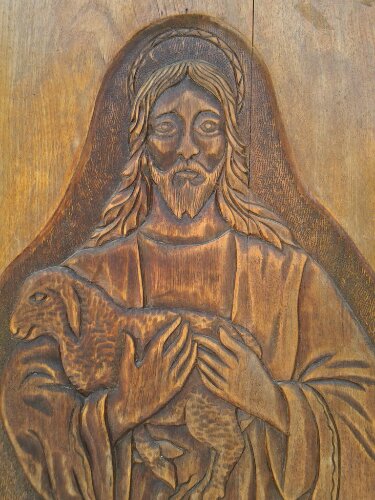
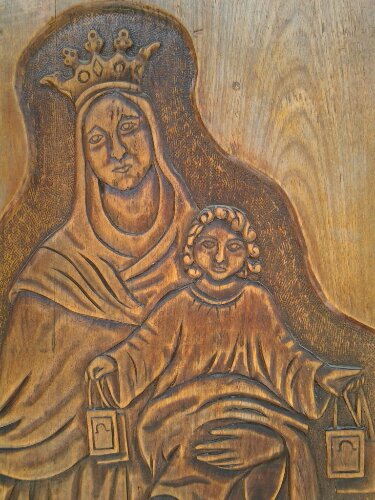
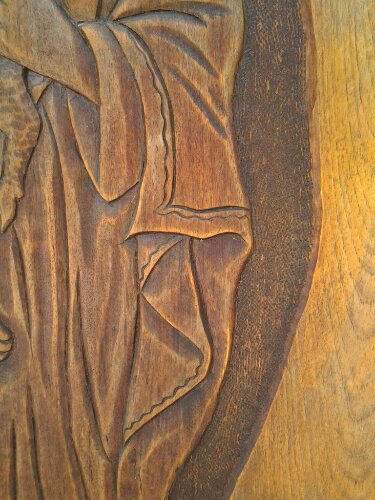
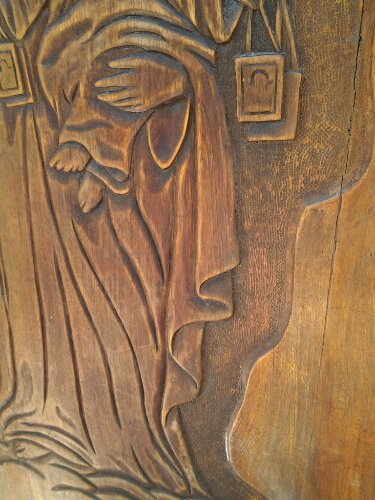
Bob, the carvings are really beautiful. As you said, this was done by a professional who understood how folds in cloth work, and someone really put their heart into these carvings. Really lovely! It must be a wonderful and sacred place for the locals.